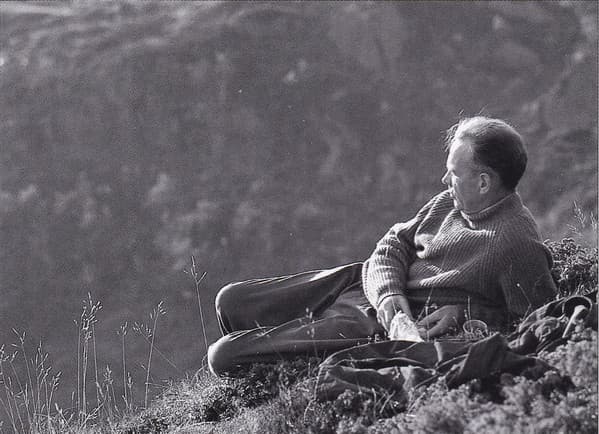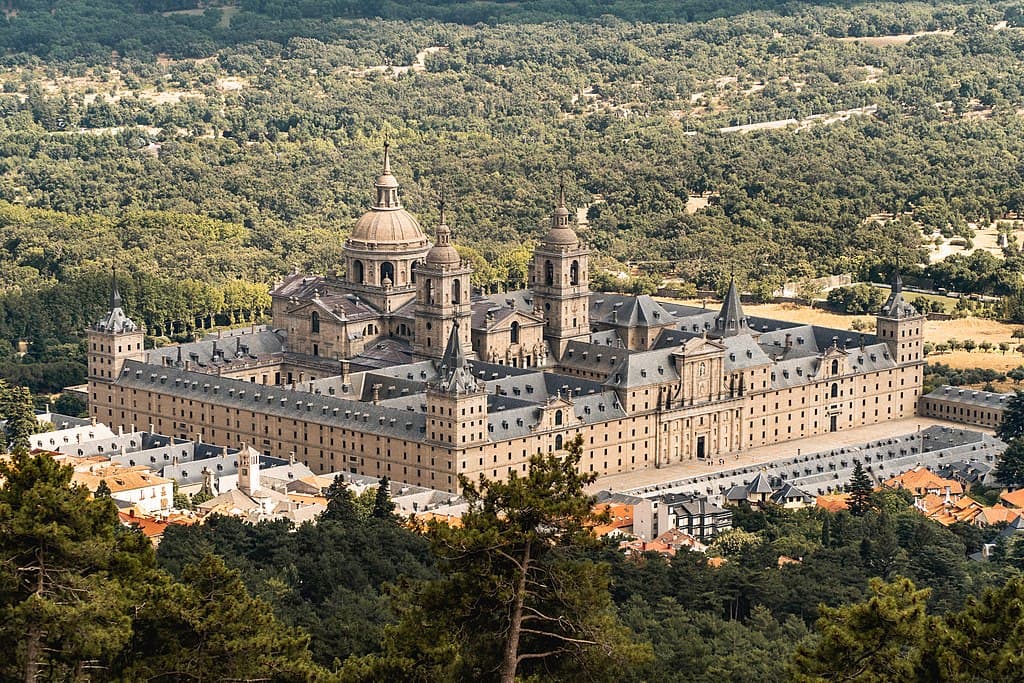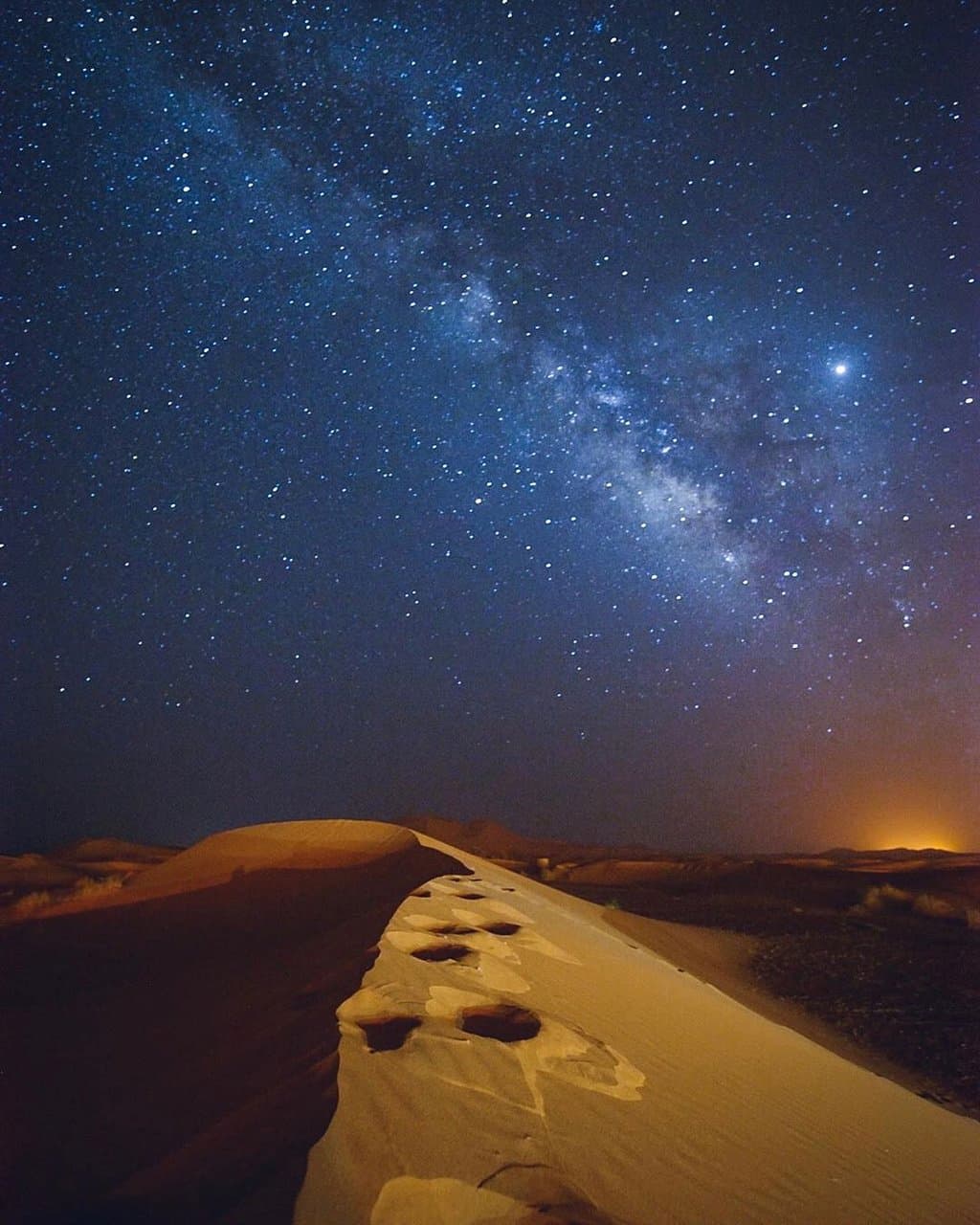Norwegian composer Geirr Tveitt (born Nils Tveit) (1908–1981) lost the majority of his compositions in a disastrous fire in his barn studio in 1970. It’s estimated that 80% of his manuscripts, kept in neat wooden chests, went up in the conflagration. He never recovered from the catastrophe, and died 11 years later, having largely stopped composing and succumbing to alcoholism.

Geirr Tveitt
He was always a talented and controversial composer. He changed his first name to Geir to make it seem more Norwegian, as he felt Nils wasn’t Norwegian enough. He added the extra ‘r’ and ‘t’ to his names to help non-Norwegians with their pronunciation.
With the encouragement of Norwegian composer Christian Sinding, he took up composition, leaving Norway in 1938 to study in Leipzig. Despite his constant lack of funds and the need for outside jobs, his time at the Leipzig Conservatory grew his talent by leaps and bounds, not only in composition, but also in piano study. His separation from Norway made him focus ever intently on Norway and its musical heritage. In 1930, the publishing firm Breitkopf and Härtel published his unusual Two-part Inventions in Lydian, Dorian and Phrygian, coming from his study of modes. His first piano concerto was broadcasted on Leipzig Radio in 1930.
In 1932, in Paris, he found inspiration in his lessons with Arthur Honegger and Heitor Villa-Lobos and took classes with Nadia Boulanger. In Vienna, he studied for a time with Schoenberg’s student Egon Wellesz. After one last stop in Paris in 1938, he headed back to Norway with, perhaps, one of the most eclectic and wide-ranging musical educations of his circle. After WWII, he resumed his international travel by touring with recitals of his music and music by composers whose works were similar to his, including Grieg and Chopin. In Paris in 1947, he gave the premieres of his Piano Sonata No. 1 and No. 20, some of his Hardanger Folk-Songs, and, in a two-piano arrangement, his fourth piano concerto, entitled Aurora Borealis. This work of French-impressionism gave an intense, glittering view of the light-dancing northern sky. Even Nadia Boulanger praised that work.
Unfortunately, his international success didn’t translate to success at home: Nationalism, after WWII, was a tainted subject and Tveitt’s work became unfashionable and unperformed. He isolated himself on his farm and continued to compose, storing the manuscripts in his barn. The 1970 fire, which may have been caused by him in an alcoholic state, essentially ended his career. The fire-scorched remains are archived at the Norwegian Music Information Centre, and in recent years, they have been exploring ways to ‘read’ the burned pages, with some success.
During 1930s, Tveitt, as part of his intense Norwegian nationalism, became part of the Neo-Heathenistic movement. Christianity should be abandoned, and people should return to a heathen system based on Norse mythology, and the Edda poetry. Christ would be out and Odin, Thor, and Baldur would return as gods. This radical thinking associated him with some of the Nazi beliefs and, post war, this contributed to the fall of his reputation and becoming an outsider in the Norwegian musical community.
It was through radio, however, that Norway heard his music. He did radio programs on Norwegian music on NRK, the national broadcaster in the 1960s and 1970s and worked for the station as an Assistant Producer. He set Aslaug Låstad Lygre’s poem “Summernatta” (We shall not sleep in summer nights) in a beautiful folk-like setting that his listeners still remember. All his skill in setting a text with the right texture, the use of folk instruments such as the nyckelharpa, and his running counterpoint give a song of clarity and deep import.
Geirr Tveitt: Sumarnatta (arr. G. Eriksson) (Gothenburg Chamber Choir and Ensemble; Gunnar Eriksson, cond.)
Since much of his music was destroyed in 1970, what remains is just a sample of his output. His only existing string quartet is a suite commissioned by the Bergens Kammermusikkforening, which received its premiere in 1960, but which had been written around 1927. Frå ei Reisedagbok (From a travel diary), Op. 5, in 8 movements, takes us around the Mediterranean, from Rome’s Appian Way to Sicily, Tripoli, Seville, and the Sahara – both the European and African sides of the great Sea are explored.
In a 1960 interview he said that this work had been inspired by an ‘unforgettable trip to the Mediterranean and its surrounding countries’, but in a later interview he clarified that it wasn’t him who made the trip in the 1920s, but ‘received certain inspiration that he sought to express in his music while studying Mediterranean folklore. It was not until later that he came to visit the cities and places indicated in the titles of the movements’.
Writers believe that he did start this string quartet in the 1920s but that it was never completed until he received the commission from Bergens Kammermusikkforening. His extensive concert tours in the 1940s and early 1960s, where he did visit many of the places named in the work, may have informed his revision as well. One writer says that the main thing is that we have been given a work for string quartet, by a Norwegian composer, quite unlike anything else for the same combination of instruments. The details of its chronology may be obscure, but the work is accomplished and unique.
He starts in the middle of the Mediterranean with a certain wave-like motion, but the overall feeling is one of progress.
Geirr Tveitt: Frå ei reisedagbok (From a Travel Diary) – I. Middelhavet (The Mediterranean) (Fragaria Vesca)
Each place visited has its own character.
The Via Appia, the Roman road outside Rome doesn’t take the military aspect we have in, for example, Ottorini Respighi’s movement from the Pines of Rome, IV. I pini della via Appia. Instead, we seem to have a vision of the tree-lined road we still know today.

Appian Way, near Casal Rotondo (photo by Livioandronico2013)
Geirr Tveitt: Frå ei reisedagbok (From a Travel Diary) – II. Via Appia (The Mediterranean) (Fragaria Vesca)
Sicily, on the other hand, is fierce and rough.
Geirr Tveitt: Frå ei reisedagbok (From a Travel Diary) – III. Sicilia (The Mediterranean) (Fragaria Vesca)
Tripoli, which is the one in Libya, and not the ones in Greece, Lebanon, or Turkey.
Geirr Tveitt: Frå ei reisedagbok (From a Travel Diary) – IV. Tripoli (The Mediterranean) (Fragaria Vesca)
Sirocco, the Saharan wind that blows across the Mediterranean and reaches hurricane speeds, is the bright center to the work.
Geirr Tveitt: Frå ei reisedagbok (From a Travel Diary) – V. Sirocco (The Mediterranean) (Fragaria Vesca)
A visit to the ancient royal residence of El Escorial, located about 45 kilometres from Madrid, is an excuse for a slow movement.

Royal Site of San Lorenzo de El Escorial
Geirr Tveitt: Frå ei reisedagbok (From a Travel Diary) – VI. El Escorial (The Mediterranean) (Fragaria Vesca)
Seville, on the other hand, is frenetic dancing and melodies with a strong Spanish flavour.
Geirr Tveitt: Frå ei reisedagbok (From a Travel Diary) – VII. Sevilla (The Mediterranean) (Fragaria Vesca)
Returning to the North African desert, our composer sits out in a black night and sees the lights of heaven above. If he were in Norway in the winter, he might see the Aurora Borealis. Sitting in the Sahara, it’s the milky way that blazes over his head.

The starry sky over the Sahara
Geirr Tveitt: Frå ei reisedagbok (From a Travel Diary) – VIII.. Stjernehimmel over Sahara (Starry Skies Over the Sahara) (The Mediterranean) (Fragaria Vesca)
Tveitt’s string quartet explores not only the world of the Mediterranean but also the world of the string quartet. Its ability to summon up feelings and images is unmatched in the regular literature. This is music to sit and think about. Music to look at new cultures, and music to observe the other worlds in our view.
For more of the best in classical music, sign up for our E-Newsletter

